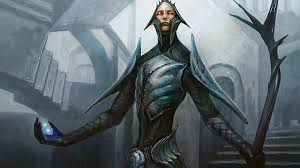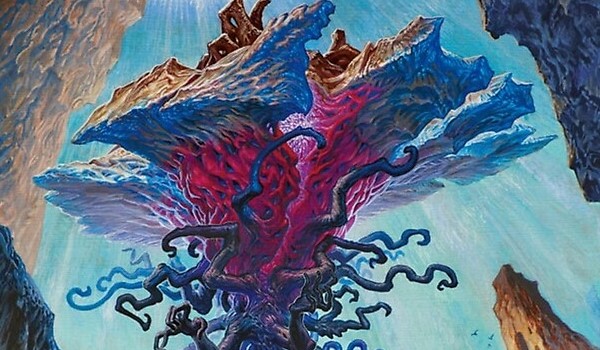Are you a Quiet Speculation member?
If not, now is a perfect time to join up! Our powerful tools, breaking-news analysis, and exclusive Discord channel will make sure you stay up to date and ahead of the curve.
Hello everyone, and welcome back to Magical Creatures! Throughout this series, we've been dealing with creatures that were created specifically for the Magic: The Gathering franchise. These have ranged from older types, such as Atog, to more recent ones, like Zubera. This is the 16th installment of this series, and we're almost done: only a handful of creatures are left; less than 10! So how come today's article only touches on expansions as late as 2010?
As we'll see later, over the course of Magic's history, the frequency with which new creatures were introduced has dropped. In the first few years, every single expansion introduced something new, but things changed after about a decade. Mirrodin was the last block to introduce several new subtypes, and that was almost 20 years ago now.
Perhaps it has something to do with the decline of real-world flavor text? Or a creative dry spell? Be sure to drop your take in the comments! Meanwhile, let's focus on today's creatures and see see what they tell us. Rigger comes from the Time Spiral block, while Surrakar and Eldrazi were introduced in the Zendikar block.
Future Sight
I have already begun tackling the Time Spiral block in the past week's piece, dealing with Camarid and Triskelavite. Today, however, I'll only focus on Future Sight, the third expansion from that block, as it's where Riggers first got their name. Released in May 2007, Future Sight was home of many excellent cards, including Tarmogoyf, Bridge From Below, and other game-changing spells.

At the same time, it worked as a final piece for the Time Spiral block, this time looking at the future. This is why it's packed with the weirdest creatures (and spells in general) ever. And the one I'm going to analyze now is no exception!
Rigger
Rigger, as the word itself suggests, is a class more than a race. And this, along with the fact that for many years only two Riggers existed, doesn't help to identify this funny creature type. Let's start from the beginning.
The first Rigger was Moriok Rigger, from Fifth Dawn. However, back in 2004, it was just a Human Rogue, and this is why I didn't include it in the piece dealing with the Mirrodin block. Can you guess when exactly things changed? That's right, Grand Creature Type Update yet again!
That sweeping errata occurred at the time of Lorwyn's realease, or October 2007. Just a few months after the release of Future Sight, which actually makes Steamflogger Boss the first Rigger to be printed with this type on the card. That's why I've chosen to include Rigger in today's piece.
Alright, so now we have two Riggers, or "creatures that specialize in the lifting and moving of extremely large or heavy objects." What about the rest? We had to wait a few years before seeing more of them. Ten years, to be more precise, leading us to the release of Unstable in 2017. The third of the so-called "Un-sets," Unstable was designed for drafting, and added 14 more creatures with the subtype Rigger to Magic.
The arrival of Unstable drove home that Rigger is a class, as they all came with different races: Gnome, Ninja, Goblin, and even Octopus and Cyborg. Interestingly, all these Riggers had something to do with the Un-set mechanic of assembling Contraptions, as did Steamflogger Boss. That leaves Moriok Rigger the only Rigger creature that has nothing to do with Contraptions... but hey, at least it can still be pumped by the Boss!
The Zendikar Block
Between 2009 and 2010, an atypical block came out. Consisting of two larger sets (Zendikar and Rise of Eldrazi) and one smaller set (Worldwake) in between, it was based on lands. Zendikar block introduced two creature types unique to Magic, and as we'll see soon, they had very different fortunes. The first only showed up on four creatures, while the second boasts a whopping 140 cards!
Surrakar
The first creature type, Surrakar, was introduced with Zendikar. Only 4 creatures exist with this subtype, and all come from the same block. Two are black, and two are blue. Their illustrations depict reptilian humanoids walking on two feet, but with arms similar to their legs. They vaguely resemble another race, Amphin. And anyway, don't forget the actual name for that race is Salamander: 13 such creatures exist, and only three of them feature the word Amphin in their name.
Well, there being just four Surrakars doesn't leave us much opportunity to discuss their features. Let's just say they have medium-sized bodies (between 2/1 and 3/3) and are classless, or simply Surrakar. All four of them have a triggered ability, but each triggers in a different way and offers a different effect. They were all decent in Zendikar draft, but nothing special otherwise.
Eldrazi: First Generation
I'm sure you all know what an Eldrazi is, and that's not just because there are 140 of them. It's also because quite a lot of them are pretty powerful, and in the past ten years or so have wrought havoc on the Modern format.
Eldrazi were introduced in the third expansion of this block, the fittingly (and foretellingly) titled Rise of the Eldrazi. At the time, just 15 creatures with the subtype Eldrazi were printed (plus some tribal sorceries, instants and enchantments).
BreachPost
Some of them were a big deal from the very beginning. Pro Tour Philadelphia, for instance, put Jesse Hampton in the Top 8 with a deck called BreachPost. The point was to use the 12 "Locus lands" (Cloudpost, Glimmerpost and the land-copying Vesuva), as well as some Walls able to generate tons of mana and cast huge creatures: Primeval Titan, Ulamog, the Infinite Gyre, and of course Emrakul, the Aeons Torn. With Through the Breach, everything gets easier, but the deck's claim to fame was its ability to hardcast these fatties.
Eldrazi: Second Generation
Over 90 more Eldrazi cards arrived a few years later, in 2015 and 2016, with the large expansion Battle for Zendikar and the small expansion Oath of the Gatewatch. And this block is where Eldrazi really became a thing. Emrakul, the Aeons Torn was already a great card, but was limited to combo strategies and ramp-centric decks like Breach Post.
Eldrazi Aggro
Be honest: do the above card images, taken together, still strike fear into your heart after all this time?
As of 2016, new flavors of Eldrazi strategies started seeing play, and winning tournaments too. Piloted by Jiachen Tao, a list of Eldrazi Aggro triumphed at Pro Tour Philadelphia in February 2016. No more 'Posts: the crucial lands were Eldrazi Temple and Eye of Ugin, allowing players to leverage efficiently-costed Eldrazi in aggressive decks. Crucially, Eldrazi were no longer just giant, overcosted creatures, but instead cost between 3 and 6 mana each, which was insanely cheap with help from Eye and Temple.
Thus, Eldrazi became a tribe suitable for an aggro deck, rather than just combo fodder, and led to the banning of Eye of Ugin from Modern. Even today, Eldrazi Stompy remains a popular contender in Legacy.
A Decline in New, Unique Creatures
Today, we had to jump from Future Sight (2007) to Rise of Eldrazi (2010) in order to gather three creature types to talk about. This is simply the culmination of a trend we have been observing for a while: the decline in the creation of creature types unique to Magic. Sets such as Fallen Empires and Tempest, or even blocks as Urza and Mirrodin, were full of these creations, but over the years they became increasingly rare.
We just saw a three-year gap, but the next one will be even more impressive: we'll have to skip ahead almost six years! Did you know that? And why do you think it happened in the first place? Let me know in the comments or on Twitter.





